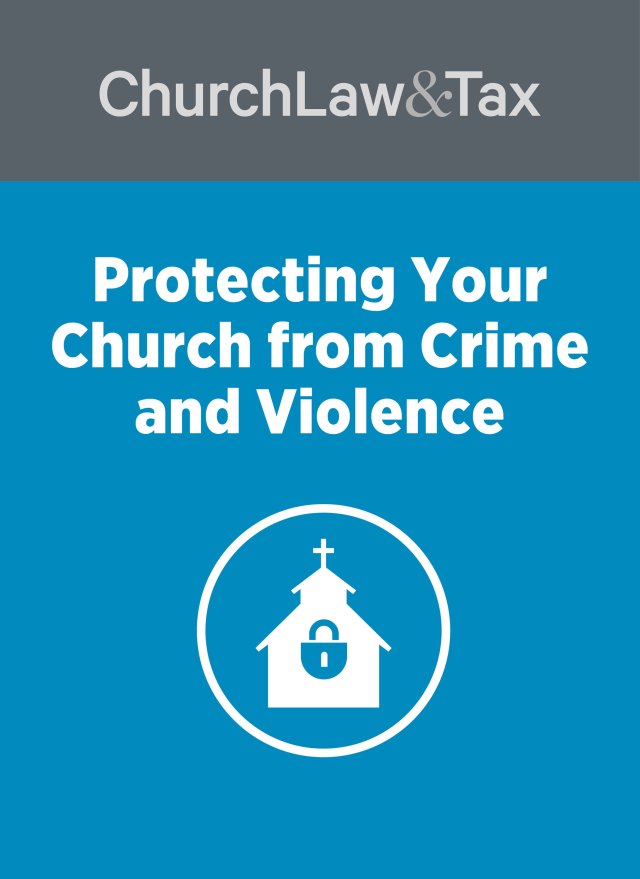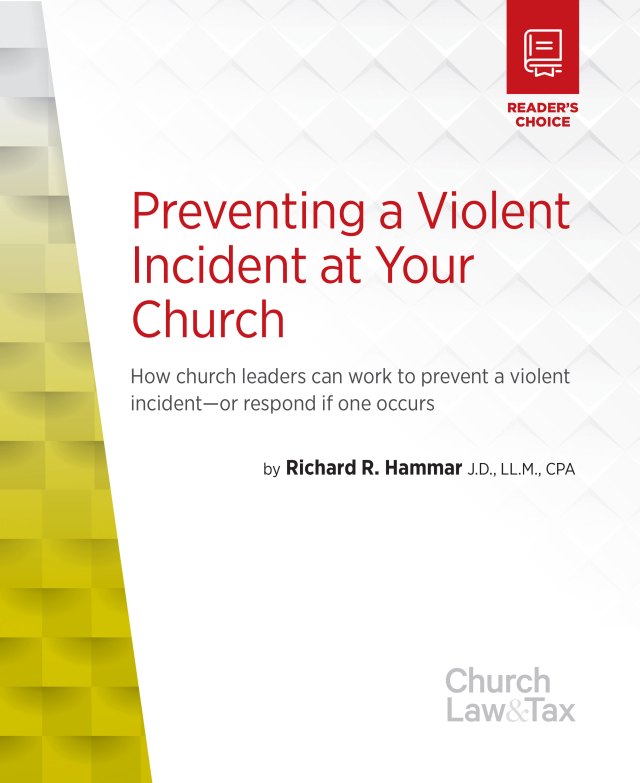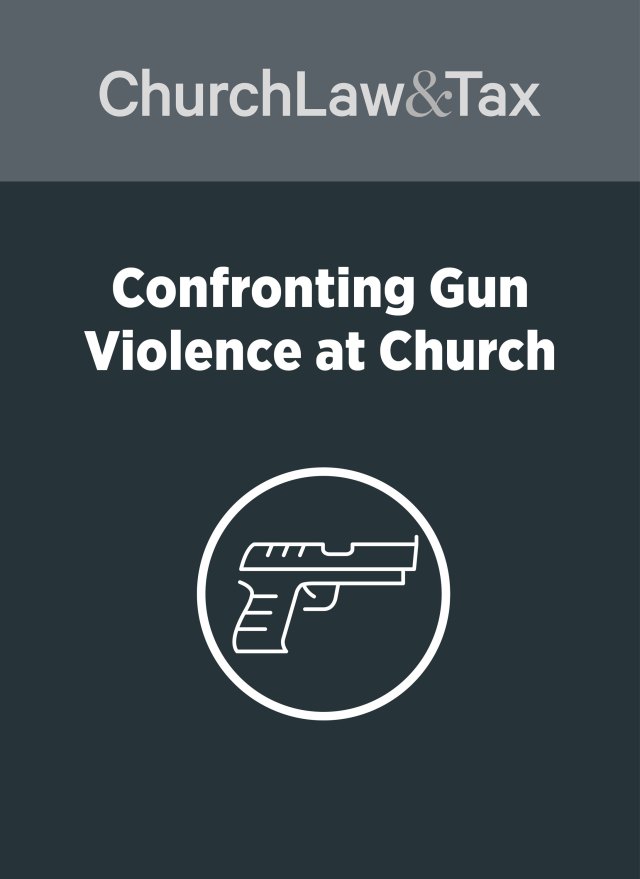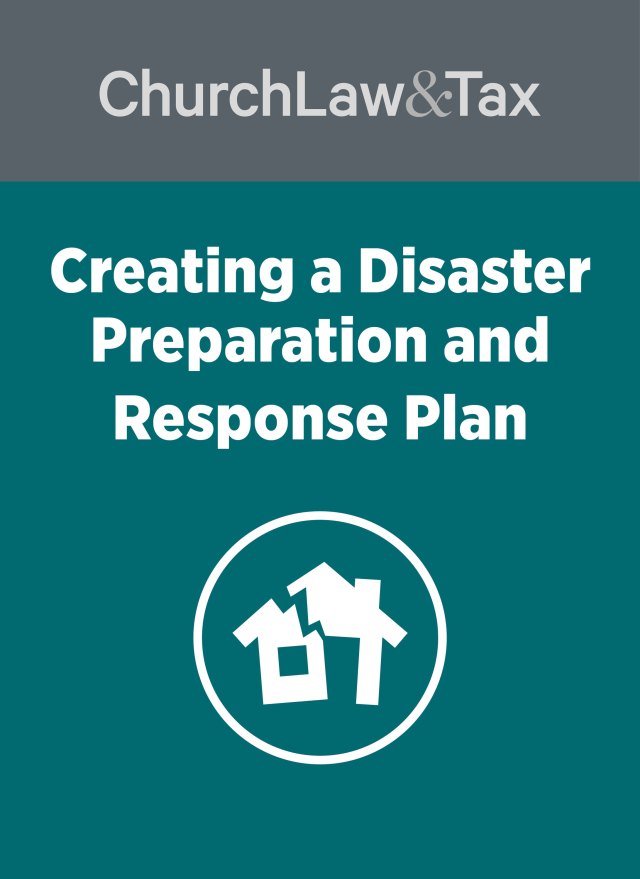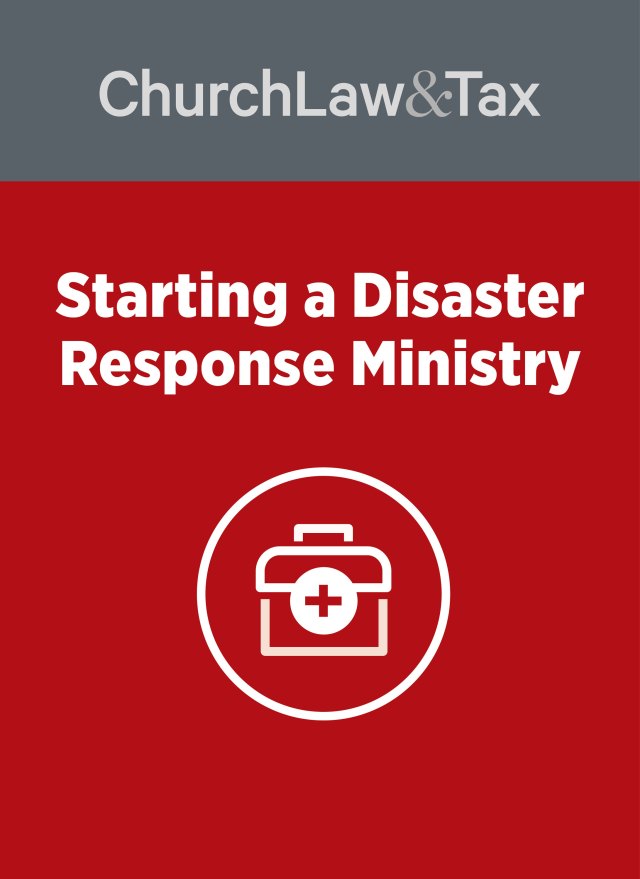Churches, by their nature, have an “open door” policy during worship services, so anyone willing to worship God and hear the good news of the gospel of Christ will be welcomed. But some who come to church may have different agendas.
Church leaders have a duty to provide protection from potentially dangerous people who may be on the premises, especially if they know ahead of time who these people are. There are two primary reasons churches need to have a plan to protect against these people. The first is the moral obligation to ensure the safety of worshipers, staff, and property. The second is to protect a church legally against lawsuits stemming from injury caused by a dangerous person.
Dangerous People
A church cannot deal with the threat of dangerous people until it can first recognize the kinds of people who pose a threat. Someone panhandling near the church doors is probably a nuisance. A dangerous person is someone who poses—or threatens to pose— an actual danger to people or property. Dangerous types of people include:
- People with weapons.
- People who are intoxicated or under the influence of drugs.
- The mentally ill who act out, including people who have not taken their medications.
- Aggressive homeless people and street people.
- People with grudges, including current and former church members and staff.
- Family members embroiled in bitter child custody battles.
- People with hatred based on their religious or political views, including those who actively hate the church and Christians in general.
On rare occasions, a person will confess to a pastor that they are dangerous or have committed a dangerous crime. In such an occurrence, pastors and churches need to be aware of the implications of the clergy-penitent privilege. Confidential communication to a minister, whether from a member of the church or not, is generally considered to be privileged and prevented from disclosure in court.
The privilege does not prevent a pastor from disclosing confidential communications to the police, who would consider the information as a tip only. The police must then conduct their own investigation and confirm the tip on their own. In cases of child abuse, however, pastors in many states are mandated to report these confessions to authorities and may face criminal and civil liability for failing to report them.
Dangerous Behavior
Church security staff should be trained to be vigilant not only for the types of people who may pose a threat, but also for certain kinds of behaviors that may indicate an imminent menace. These behaviors include:
- Display and use of weapons, including guns, knives, and blunt instruments.
- Assault or threats of assault.
- Arson.
- Burglary and robbery.
- Break-ins and vandalism. Sexual abuse and domestic abuse.
- Custody battles and attempted seizures of children.
- Verbal abuse, hate speech, threats, and taunts.
- Violent political activity, including hate speech.
- Any other kind of unusual or bizarre behavior.
A variety of reasons exist for dangerous behavior, but the most common factor is mental disorders, says Michael Hodge, president and owner of Michael A. Hodge and Associates, a security management consulting firm. Other types of behaviors are on the increase in both the business world and the church environment, including child custody battles and violations of temporary restraining orders, he adds.
Dale Annis, founder of Church Security Services, warns of the threat of robbery. “There have been several cases of subjects entering a church and robbing the congregation,” he says. “If you were going to rob a large group of people, is there any group that would be more passive and vulnerable?”
Dangerous people are sometimes not so obvious and flamboyant in their behavior. Annis and Hodge describe examples of unusual or bizarre behavior, some subtle in nature, which should alert church leaders to take action:
- A person enters the church carrying a large bag and keeps his hand in the bag after he is seated.
- In warm weather, a person comes into the church wearing a long coat and dark glasses and appears furtive while watching people around him. These coats are sometimes worn to conceal a weapon.
- An individual enters the worship service and goes to the stage, takes over the podium, and begins yelling at the congregation.
- A person is sweating profusely, not engaged in the service, or appears uneasy. Hodge notes that this behavior typically indicates someone who is thinking about—or ready to engage in—unlawful activity.
- Two or more people are grouped together, appearing not to be engaged in the church service, but looking at the surroundings. Those people may be conducting surveillance for a later theft attempt.
It’s important to be alert for dangerous behavior during any activity held on church property. This includes time before, during, and after worship (especially in crowds of people); at special events such as weddings; and during evening hours.
The church parking lot can be a particular trouble spot because it allows dangerous people to do their dirty work outside the building and away from the deterrence of large crowds. A church may be legally responsible for parking lot assaults if there is a history of assaults in the area and the church failed to take reasonable precaution.
Another set of dangerous behaviors can take place when no one else is in the church. These include arson, break-ins, vandalism, or other acts done by someone who is able to gain entry or who lingers undetected after everyone else has left the building.
Dangerous people can also be identified by what they say as well as by what they do. “Sometimes people will make subtle threats or allude to issues that are bothering them,” says Hodge. “Church staff should be educated about how to screen for those types of things. You might have to pull the person aside and talk to them. You might have to notify the rest of the staff that this is somebody who needs to be observed when they are seen on church property.”
Confront and Remove
The best-laid plans for preventing a dangerous person from entering your facility may not be enough, and he or she may still show up and get inside. In the vast majority of cases, if you suspect the person poses a threat, then the person should be quietly but firmly confronted and removed. The keys to accomplishing this with minimal disruption and harm are knowing the right time to move, knowing what to say and how to say it, and understanding that physical contact is a last resort.
Should you remove the person or let them stay? Inexperienced security personnel may be tempted to always storm in and drag away a suspicious person. That’s not the right course of action, says Annis. In late December, a suspicious-looking man walked into Annis’ church. The person had been drinking, was dirty, and was wearing a hooded parka. Church security officials also knew he was a retired U.S. Army Special Forces soldier.
“We saw him walk in. We kept our eyes on him. He sat down and promptly nodded off. The guy slept through the whole service,” says Annis. “What’s more disruptive—letting the guy sleep or making a scene? You don’t make a scene if the person is not disruptive. So when the service was over, we approached him and said he had to leave. This is where experience comes into play.”
Annis says he recently has received “a dozen” reports around the country of people walking onto the stage and taking over a worship service. If the disruptive person is violent, that person needs to be quickly removed. If the person is nonviolent, the pastor may simply declare that the service is over and ask worshipers to quietly file out of the building. “While this is going on, our team members cordon the guy off and continue to ask everybody else to leave,” says Annis. “This way, we’re taking away his audience.”
But in most other circumstances, action is necessary. When weapons are observed or when someone makes a specific threat to the church or its people, action must be taken immediately. If the suspicious person has mingled among a larger group of people, action may be warranted. “The first thing is to make a request that the person move away from the general population,” says Hodge. “If they refuse to do so, that’s a red flag that this is a serious issue.”
Right Words in the Right Way
When confronting a suspicious person, what you say is important, but how you say it is paramount. The best approach is to speak quietly but firmly and to be respectful of the person’s dignity and humanity. This approach keeps the situation from becoming overly disruptive and also acknowledges the dual needs of protection and redemption.
At times, a whispered request not to disrupt the service is sufficient. Such quiet expressions keep the confrontation low key and provide deterrence by informing the person that they are being watched. Keep the dialogue to a minimum by leaving no room for an argument.
“Explain exactly what the regulations and the rules are and what they have to do,” says Annis. “If they ask why they have to leave, never say, ‘because I told you so.’ That starts a confrontation. Just tell them they have to leave or the police will be called.”
Never hurl specific accusations at anyone, such as “you’re smelly” or “you’re trespassing.” These accusations will almost always incite hostility and escalate the situation. Your congregation should also be informed that security matters should be left to designated individuals.
The Trigger of Touch
Never touch anyone unless you are ready to respond to their reaction—especially if you think the person may be dangerous, Annis says.
Hodge also sees touch as a last resort. In his training of church and business security personnel, he teaches a method of non-physical removal. “There is a way to use your hands and arms to usher someone out by pointing the way or gesturing in a certain direction. This is a nonverbal communication that shows authority and direction,” he explains.
Legal Considerations
Churches can be held liable for damages caused by the acts of a dangerous person when the church has been negligent in protecting others. Negligence is defined by church law attorney Richard R. Hammar as “conduct that creates an unreasonable and foreseeable risk of harm to another person that results in injury. Negligent conduct need not be intentional. It may consist of a specific act or failure to act. It may be helpful to think of negligence as carelessness.”
To avoid allegations of negligence, security consultants urge churches to overcome their reluctance to ask a dangerous person to conform to rules of behavior or to leave. The key legal consideration is that a church is not a public place, such as a park or a government building.
“The big thing to remember is that someone who is intruding on your church is intruding on private property,” says Annis. “If you tell them to leave, are you in trouble? No. If somebody came into a Kmart and started threatening people, what would Kmart do?”
An additional guard against liability is to avoid defaming or causing physical injury to anyone, whether you consider them dangerous or not. If a group of untrained and aggressive ushers or other security people become too physical and hurt someone, the church could face liability for the injury. When you are speaking about people or situations, use code words or speak in other ways that are not obvious to anyone else who may be listening.
“You have to be mindful of what you say, even across your radio, when you think someone’s not listening,” says Hodge. “You observe somebody and say, ‘That person who just walked past you is a registered sex offender.’ If it’s not true, and someone else overhears this, you can be sued for defamation of character. You need to observe tactfulness, professionalism, and confidentiality. There’s a way to address situations like that in code.”
In some cases, a church can ask a court to issue a protective order barring a particular person from the premises. If the person shows up anyway, he can be removed by the police and charged with violating the court order. Courts have generally recognized a church’s right to protect its property and people by removing disruptive and dangerous people.
Sexual Predators
One particular type of dangerous person—a sexual predator—poses a tough challenge for a church, because this person often operates from inside the walls as a staff member or ministry volunteer. Sexual abuse in church settings causes untold human damage and can leave the church liable to severe civil penalties. The best way to keep such a dangerous person out of a church is through the use of criminal background checks.
“I’m very strong and forthright in teaching churches about liability aspects,” says Hodge. “Anybody who is involved with any ministry involving children needs to undergo criminal background checks. Other pieces of a strong screening process include a fully completed application, contacting all references, a comprehensive interview, and a “six-month rule” that does not allow people to volunteer for a ministry involving children until they have been a member in good standing for six months.”
A church can protect against sexual abuse through the way it retains and supervises staff and volunteers. If a problem of past or current behavior is discovered, security consultants say there is only one option: no second chance for involvement in the ministry.
“The church will have to remove that person immediately,” says Hodge. “Otherwise, the church has a liability for negligent retention by having that person on the staff.” A church can further protect itself by requiring all prospects to truthfully answer questions on their application. Then, if a past sexual offense is subsequently discovered, the church can remove that person for lying on the form.
Redemption and Protection
The grievous nature of some sexual crimes is incentive for legislators to severely limit a convicted offender’s freedom. But when it comes to protecting people in a church from sexual predators and other kinds of dangerous people, how much protection is too much, and how much is too little? Does the need for security necessitate creating the modern-day equivalent of the leper colony, where anyone with a dangerous or troubled past is sealed off? Isn’t the mission of the church precisely to be the vehicle for the restoration of such people?
These issues of redemption and protection have clashed in Georgia as a result of a November 2007 lawsuit filed against Governor Sonny Perdue over a state law that prevents registered sex offenders from volunteering in a church. According to a story in the Gainesville (Georgia) Times, the Southern Center for Human Rights filed suit on behalf of several people on the sex offender list and asked others to testify in a hearing. Two of them told the court they wanted to speak at churches about their salvation, but were prevented from doing so by the law. At the time of this article’s publication, no ruling had been made on the lawsuit.
Annis recommends using a “common sense” test when balancing protection and redemption. “People with a troubled history should not be excluded unless their prior history is a threat to the safety and security of the congregation,” he says.
A person convicted for child molestation must not serve in children’s ministry, Annis says, and a person convicted of grand theft should not be allowed to work as a financial administrator. Someone who has been convicted of rape should not be left unattended with females. “Other individuals should be monitored while being allowed to attend services,” he says. “Your security director should set guidelines when dealing with high-risk individuals.”
If a church decides to restrict access to certain ministries and activities, leaders should convey the news to that person discreetly, says Hodge, “This should be on a need-to-know basis,” he says. “You don’t need to let everyone know the reason why.”
If a church chooses to engage in the redemptive work of ministry to people with a dangerous past, that work should be done with the safeguards of confidentiality, privacy, and safety in place. All personnel engaged in such ministries need to be extensively trained and certified, says Hodge.
But when push comes to shove, Annis and Hodge both say that the protection of the congregation is paramount, and that all church policies and actions should take place with that understanding.
“Common sense should prevail,” says Annis. “We are to spread the gospel to the entire world, but we do not need to expose our families to unnecessary risks. We must have a balance between security and preaching the gospel.”

